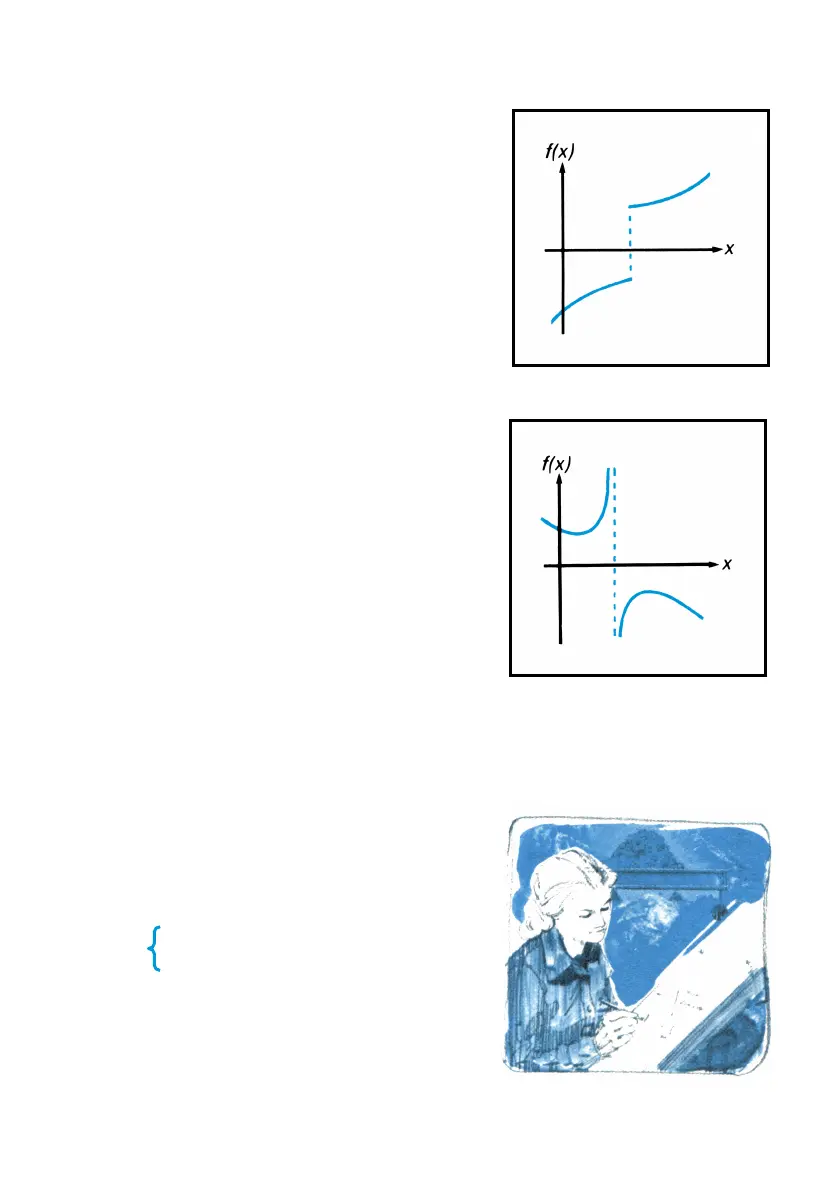Appendix D: A Detailed Look at _ 227
Special consideration is required for
a different type of situation in which
_ finds a root with a nonzero
function value. If your function’s graph has
a discontinuity that crosses the x-axis,
_ specifies as a root an x-value
adjacent to the discontinuity. This is
reasonable because a large change in the
function value between two adjacent
values of x might be the result of a very
rapid, continuous transition. Because this
cannot be resolved by the algorithm, the root is displayed for you to
interpret.
A function may have a pole, where its
magnitude approaches infinity. If the
function value changes sign at a pole, the
corresponding value of x looks like a
possible root of your equation, just as it
would for any other discontinuity crossing
the x-axis. However, for such functions,
the function value placed into the Z-
register when that root is found will be
relatively large. If the pole occurs at a
value of x that is exactly represented with 10 digits, the subroutine may
try that value and halt prematurely with an error indication. In this case,
the _ operation will not be completed. Of course, this may be
avoided by the prudent use of a conditional statement in your subroutine.
Example: In her analysis of the stresses
in a structural component, design
consultant Lucy I. Beame has determined
that the shear stress can be expressed as
Q =
where Q is the shear stress in newtons per
square meter and x is the distance from
one end in meters. Write a subroutine to
compute the shear stress for any value of
x. Use _ to find the location of zero shear stress.
